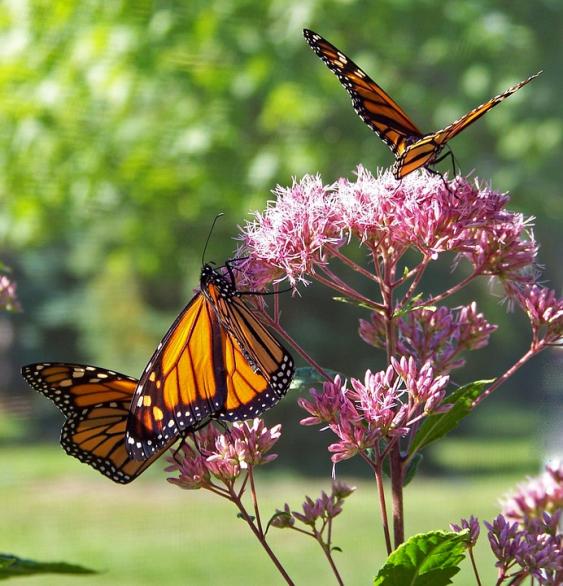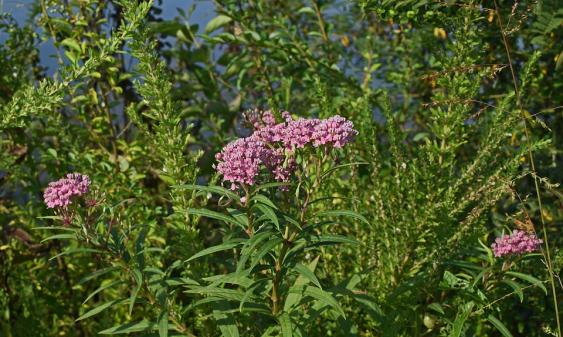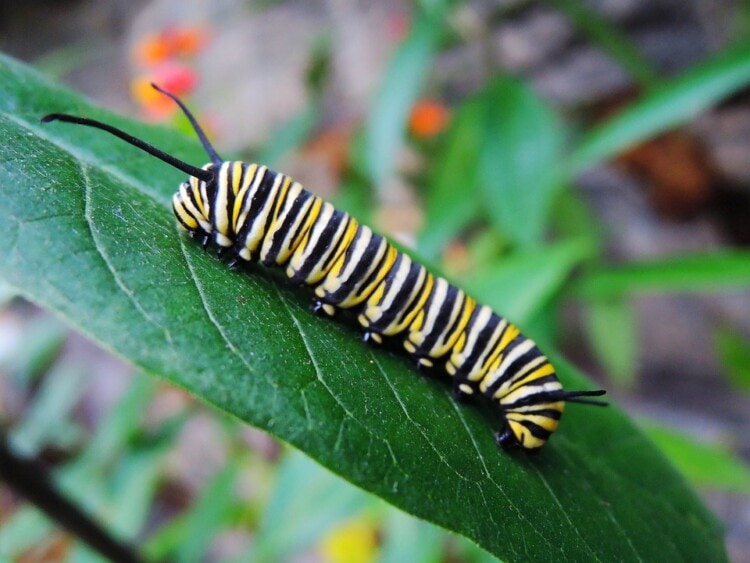Monarch caterpillar feeding on leaf. Pixabay photo
The Butterfly Milkweed is attractive and a great pollinator plant as well! We’re excited to bring attention to it because of its ability to support insects and birds but most importantly, Monarch caterpillars who feed exclusively on the leaves, the only host plant for the beautiful Monarch butterfly.
Asclepias tuberosa (Butterfly Milkweed) was chosen the Perennial Plant of the Year because it met all the criteria of the Perennial Plant Association: low maintenance needs, adaptability to a wide range of climates, pest and disease resistance, wide availability, multiple seasons of interest and ease of propagation.
Milkweed for Monarchs
This excellent native plant is a host plant to monarch butterflies…the only plant that feeds monarch caterpillars on which monarch butterflies lay their eggs. The caterpillars are voracious eaters and will consume plenty of leaves, which will not harm the plant. (The plant contains a toxin poison to most vertebrates, but not to monarch caterpillars so by eating it, the monarch caterpillar becomes poisonous to garden predators.
In recent years, the elimination of grasslands and meadows has led to a scarcity of milkweed which creates the crisis we currently have for the monarch butterflies. According to the National Wildlife Foundation, the monarch population is the U.S. has decreased by 90 percent during the past two decades.

Monarch feeding on Milkweed nectar. Pixabay photo
Characteristics of Milkweed
They can have vibrant orange, pink or yellow flowers and many bees, wasps, ants, butterflies, beetles and hummingbirds visit Milkweed. They have long lasting flowers that appear in summer. The flowers are a source of nectar for many butterflies and the leaves are a good source for the monarch butterfly caterpillars. It is known for the milky white liquid within its foliage and its sweet-smelling flowers.
Planting Milkweed

Milkweed growing in a field. Pixabay photo
Make sure you buy a local milkweed species that is naturally found in your area but common milkweed, butterfly weed, and swamp milkweed will do fine in most gardens. Plant in well drained soil. There are dozens of milkweed varieties that are native to the US, but only about 30 act as host plants for monarchs, so if you’re interested in providing a food source for Monarch butterflies, make sure you choose one that they will feed on.
Milkweed is quite comfortable in meadow gardens but it also works in more semi-formal urban gardens. Looks great in large masses for a striking display of color. Some species can grow up to 6 feet tall.
You can’t go wrong with this Perennial Plant Choice of 2017. Are you anxious to incorporate this native perennial in your landscaping plans? Whitehouse Landscaping has the horticultural knowledge in landscaping to make sure the right plants are chosen for the right place insuring your landscape thrives and can be properly maintained. Our design experience can create an outdoor space that is beautiful, distinctive and livable.
Contact Whitehouse Landscaping at 484-300-4290 to learn more about our services.

